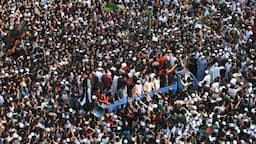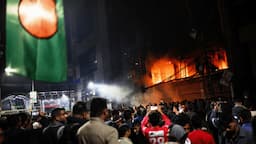A recent monorail breakdown in Mumbai on Aug 19 following heavy downpour in the metropolitan has raised urgent questions about the state of public infrastructure and emergency preparedness in India.
Hundreds of passengers were trapped mid-journey after a technical fault halted services on the Chembur–Wadala monorail line. With air conditioning failing and no rescue in sight for nearly two hours, some commuters reportedly contemplated jumping off the train to escape the heat and suffocation.

According to media reports, several passengers fainted while waiting for assistance, and rescuers later confirmed that basic evacuation equipment was not readily available on-site.
This incident is not an isolated case. Over the past decade, India has witnessed repeated infrastructure-related failures that have endangered citizens’ lives, despite significant tax contributions and capital expenditure on urban projects.
India’s urban population has grown rapidly — from 285 million in 2001 to over 480 million in 2021 (Census projections). Yet, investment in public safety, maintenance, and disaster management has lagged behind.
The National Disaster Management Authority (NDMA) has repeatedly stressed the need for risk assessments in infrastructure planning, but implementation remains uneven across states. As per NDMA’s own 2020 report, less than 40% of Indian cities had updated disaster management plans aligned with climate and urban growth patterns.
Mumbai, India’s financial capital, has long grappled with monsoon chaos despite decades of promises of better infrastructure. The city receives over 2,200 mm of rainfall annually, and each year, trains, buses, and flights are disrupted while streets become rivers within hours.
A 2005 deluge that killed more than 500 people exposed deep flaws in the drainage system, yet little has changed since. The Brihanmumbai Municipal Corporation has spent thousands of crores on flood mitigation projects, but chronic issues such as clogged drains, encroachment on floodplains, and uncoordinated urban expansion persist.
The monorail breakdown during heavy rains fits into this pattern, where critical services collapse under seasonal stress, raising serious questions about disaster preparedness in a city that drives India’s economy.
These events indicate that while India has formal disaster management frameworks — such as the Disaster Management Act, 2005, and state-level disaster plans — the key gap lies in execution, coordination, and climate-adaptive infrastructure design.

Experts have warned that without embedding risk-based planning into every public project, from rail networks to drainage systems, India’s cities will continue to leave citizens exposed when emergencies strike.
The Mumbai monorail incident is a reminder that infrastructure is not merely about construction and inauguration. It is about sustained accountability, regular safety drills, trained emergency teams, and real-time response mechanisms.
As citizens pay rising taxes and endure increasing costs of living, the expectation is not only for functional transport or civic facilities, but also for systems that can protect life in the event of technical or natural crises.

















